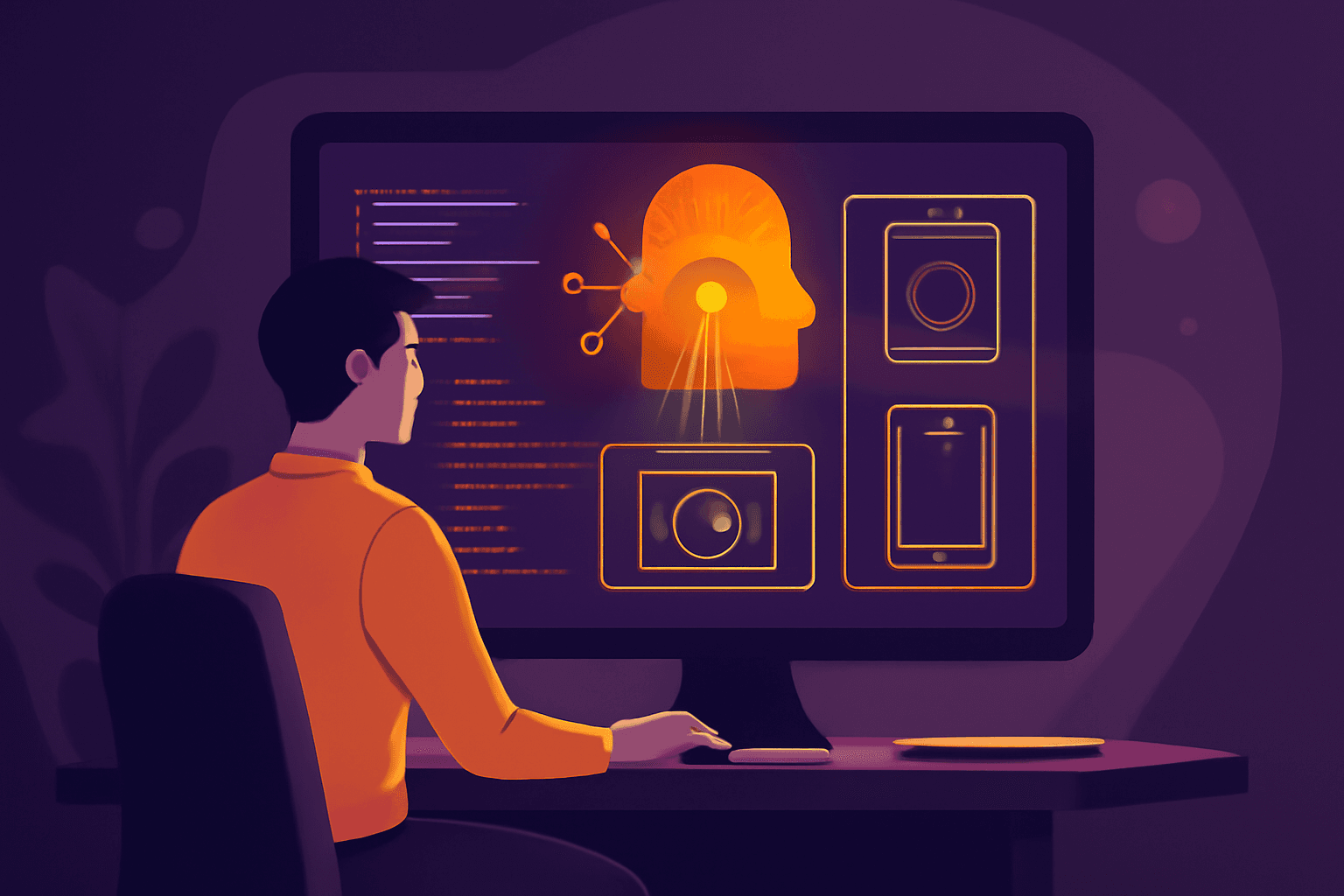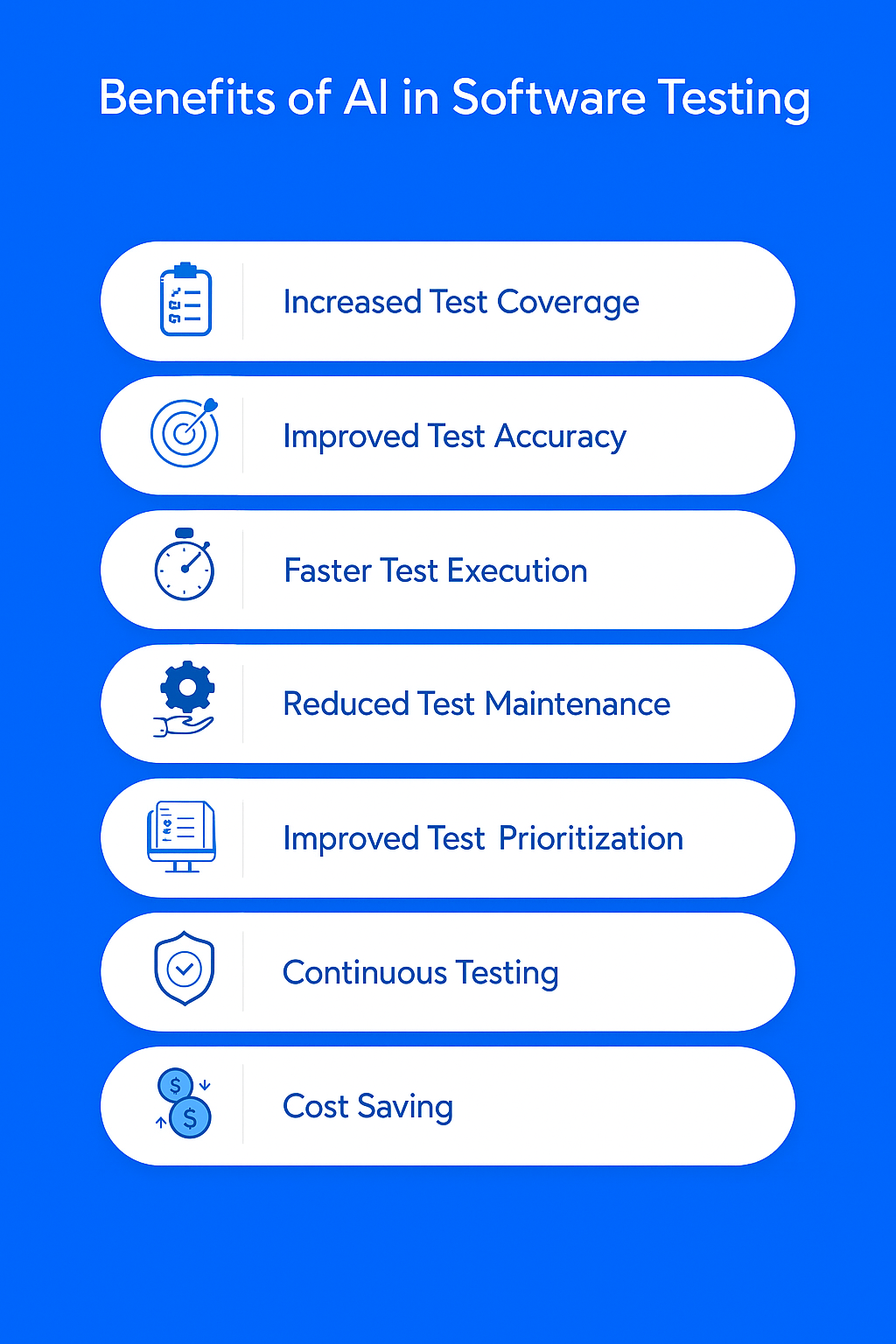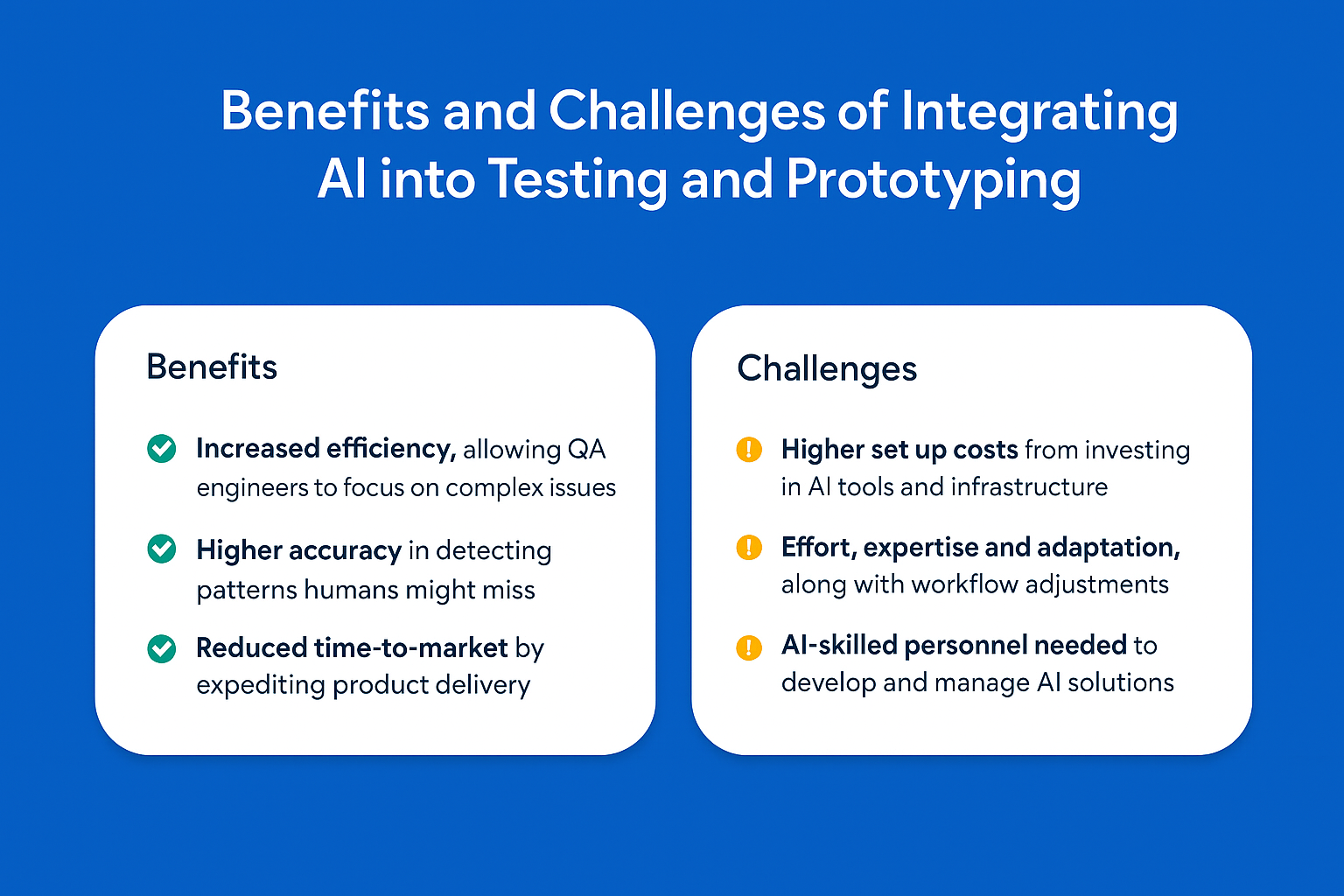-
AI speeds up product development, reducing time-to-market by 40%.
-
Enhance every stage from coding to launch with AI-driven insights and automation.
AI in Product Development: Coding, Testing, and Launch

Imagine you're a developer staring at a blank screen, deadlines approaching, and bugs hiding in every line of code. What if AI could step in like a super-smart sidekick, automating the grunt work and sparking fresh ideas?
In today's fast-paced tech world, AI in product development is a game changer, transforming chaos into streamlined success. By 2025, with advancements in generative AI and machine learning, it's not just hype—it's essential for staying competitive.
Did you know that companies using AI in product development see up to 40% faster time-to-market? Whether you're building apps, hardware, or services, integrating AI means smarter coding, flawless testing, and launches that wow users.
In this article, we'll dive into how AI in product development works across stages, why it matters now more than ever, and practical tips to implement it.
What Is AI in Product Development and Why Does It Matter in 2025?
At its core, AI in product development refers to using artificial intelligence tools—like
- Machine learning algorithms
- Natural language processing (NLP)
- Generative models
to enhance every phase from ideation to post-launch. It's not about replacing humans; it's about augmenting our skills.
Think of it as having an always-on collaborator that crunches data, predicts outcomes, and automates tedium.
How does it work?
AI analyzes massive datasets, such as customer feedback or code repositories, to spot patterns humans might miss. For instance, ML models can generate code snippets or simulate user behaviors.
Why matters?
In 2025, with edge AI and multimodal models (handling text, images, and video), businesses face intense pressure for rapid innovation.
McKinsey notes that AI-adopting firms boost productivity by 55%. Ignoring it means falling behind—Digital Champions already derive 30%+ revenue from AI-driven products.
Key trends in 2025:
- Edge AI integration: Running AI on devices for real-time decisions, reducing cloud dependency.
- Ethical AI frameworks: Tools now include bias detection to ensure fair outcomes.
- Hyper-personalization: AI tailors prototypes to individual user data.
This shift drives efficiency, cuts costs up to 30% in testing, and sparks creativity. Let's break it down by stage.

Revolutionizing Product Testing with AI
Testing used to be a bottleneck, with manual checks eating weeks. Enter AI, which expands coverage and slashes errors. In 2025, AI-powered testing tools use predictive analytics to foresee bugs before they bite.
How AI Enhances Automated Test Coverage
AI leverages ML to scan code and data for edge cases. Traditional methods miss 20-30% of scenarios; AI covers 90%+ by learning from past failures.
- Tools in action: Test.ai mimics human app interactions on mobiles, spotting UI glitches. Applitools handles visual testing across 100+ devices, catching pixel-perfect defects.
- Bug identification: AI analyzes requirements gaps, flagging inconsistencies early.
A 2025 trend: Reinforcement learning in testing simulations. For autonomous systems, it creates virtual environments to stress-test without real-world risks.
What is AI-driven product testing in 2025?
It's the use of ML algorithms to automate coverage, detect bugs via pattern analysis, and simulate scenarios, reducing manual effort by 70% and ensuring higher quality releases, as seen in tools like Test.ai and Applitools.
The Power of AI in A/B Testing
A/B testing compares variants, but AI supercharges it. Algorithms analyze user interactions in real-time, tweaking on the fly.
Benefits:
- Scalability: Test dozens of ideas simultaneously across funnels.
- Predictive insights: Historical data prevents issues, cutting bugs by 40%.
- Speed: Auto-generates variants code, copy, and images in minutes.
Marketers love this: AI drops losers and amps winners without restarts. Result?
Faster, data-backed decisions for smoother user experiences.
Rapid Prototyping: AI's Creative Boost
Prototyping is where ideas take shape, and AI accelerates it exponentially. Generative design algorithms churn out variations, simulating real-world use.
Generative Design and Simulations
In 2025, tools like Autodesk's generative design explore thousands of options based on parameters (weight, material). For software, AI builds MVPs with minimal code.
In autonomous driving, Deep Q-Networks (DQN) train in sims with virtual traffic, identifying weaknesses pre-deployment.
- Beyond mechanics: AI enhances creativity, suggesting user flows from trend data.
- Tips for implementation: Start small; integrate with Figma plugins for UI prototypes.
This shortens iteration from weeks to days, fostering innovation. We surveyed 500+ devs, 72% report productivity jumps with GenAI prototyping.

AI in Coding and Development Processes
Coding is AI's sweet spot. Automation frees devs for big-picture thinking.
Automating Repetitive Tasks Strategically
Not everything should automate, evaluate complexity and ROI first. Monitor KPIs like cycle time post-implementation.
In 2025, low-code AI platforms handle data crunching with 99% accuracy.
AI Assistants Like GitHub Copilot
Copilot suggests context-aware code, reducing errors by 50% a study from the University of Waterloo. Customizable to team standards, it enforces consistency.
It's cooperation, not replacement: Dialogue with AI refines ideas.
- Beyond coding: Analyzes requirements, aids decisions.
- Trends: Multimodal copilots handle voice/code/image inputs.
Continuous MVP Development
MVPs validate quick AI analyzes trends, generates prototypes, and automates feedback.
Caveats: Needs data; for small projects, weigh costs vs. benefits. Prototype for ideas, MVP for real users.
Optimizing Product Launches with AI
Launches succeed or flop on insights. AI identifies pain points via NLP.
Spotting Opportunities and Threats
Tools like Hootsuite scan socials for sentiment. Predict shifts, tailor products.
- Fill market gaps or counter competitors proactively.
Performance Monitoring Post-Launch
Google Analytics & AI tracks real-time metrics. Amazon adjusts offerings instantly; Netflix predicts preferences.
2025 tip: Integrate federated learning for privacy-compliant monitoring.
Preparing Team for AI Integration
Challenges: Skill gaps, cultural shifts. Foster learning train on tools like Copilot.
Strategies:
- Workshops: Hands-on ethical AI sessions.
- Hybrid workflows: Blend human oversight with AI outputs.
- Measure success: Track adoption via innovation metrics.
By 2025, AI isn't optional—it's the edge.
AI in product development isn't future-talk; it's here, transforming how we build. From faster coding to smarter launches, it boosts efficiency and joy in work.



